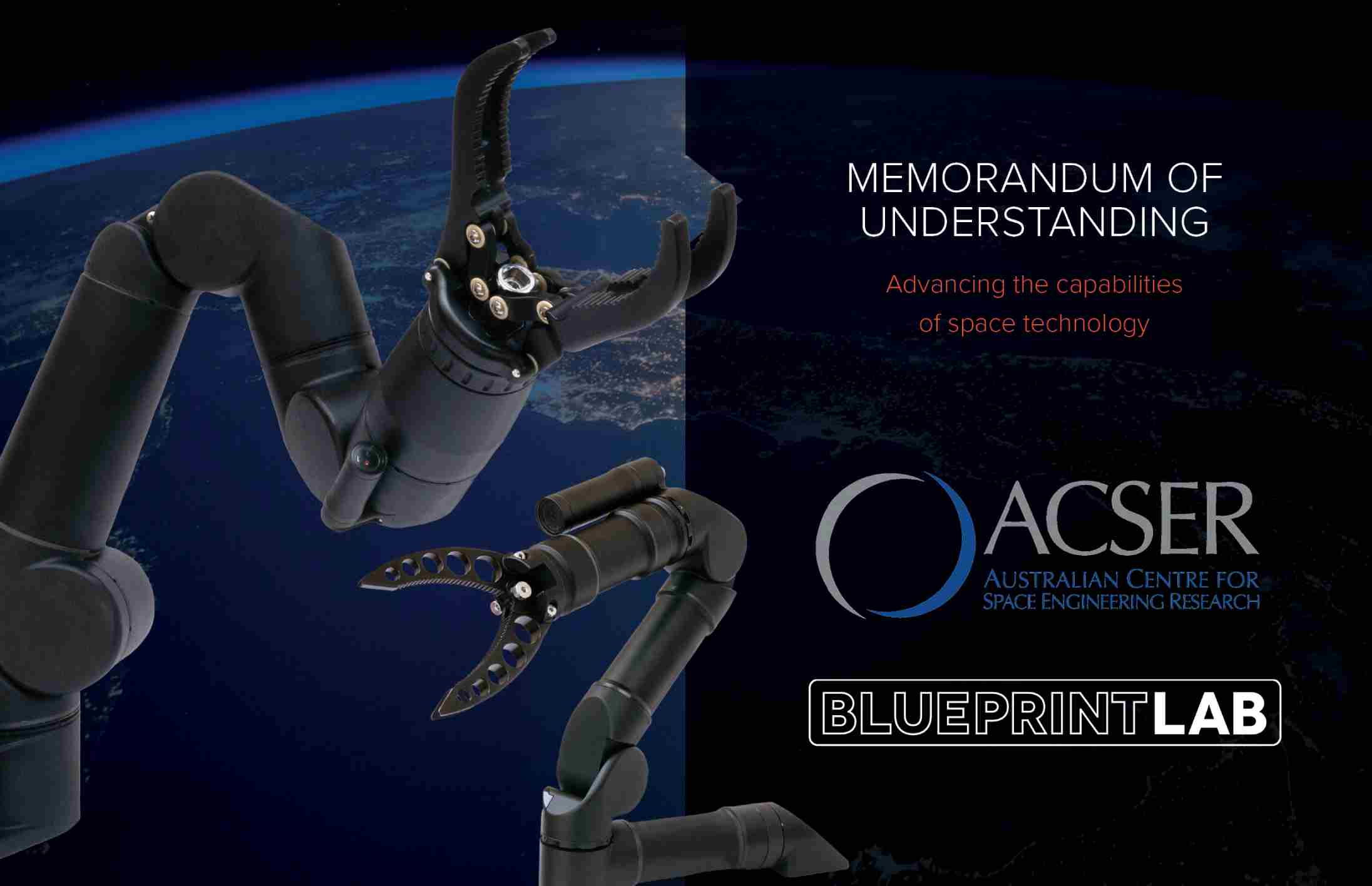Reach Robotics Pty Ltd and UNSW’s Australian Centre for Space Engineering Research (ACSER) have signed a Memorandum of Understanding (MoU) to reflect plans to collaborate on environmental testing and analysis of robotic manipulator technology.
Reach Robotics and ACSER have a mutual interest in advancing the capabilities of the space technology sector through the transfer of existing technologies with modifications to withstand space, lunar and Martian environments.

The planned collaboration will see ACSER, led by Professor Andrew Dempster, work with Reach Robotics to test the company’s manipulator technology in ACSER’s thermal and vacuum test chambers. Scheduled for Q1 2022, initial testing will verify the suitability of existing commercial manipulator technology for space and inform subsequent engineering activities. A follow-on test is scheduled to take place in an overseas test facility in Q2 2022 via ACSER’s research partners.
Anders Ridley-Smith, Business Development Manager at Reach Robotics says,
“Reach Robotics’s vision is to extend human reach into harsh environments. The company is achieving this by creating advanced manipulators (robotic arms) and perception systems. We have historically worked with subsea and nuclear clients to help them remotely inspect their infrastructure and intervene in their environment. We’re actively looking to transfer our manipulator arms technology, designed for harsh subsea environments, to the space sector. Collaborating with ACSER and drawing on their space engineering knowledge and expertise will help us progress more rapidly on this journey.”
One of ACSER’s goals is to identify commercial technology that may already be suitable for space operations where the “Old Space” paradigm may no longer be applicable, depending on the space mission. For example, if a mission has a shorter duration or the launch costs are lower, the specification requirements for the applicable space technology may be correspondingly reduced.
ACSER has for many years been investigating how space resources, specifically moon water, can be extracted and used as human endeavours reach further into space. The Reach Robotics experience with extreme environment robotics is ideal for supporting such space missions.
Professor Dempster said, “Australia has committed to a lunar rover to manipulate regolith [lunar soil] so we are in the right place at the right time to be developing these technologies.”
